
For enthusiastic drivers, driving can be fun on open roads, and so can overtaking. If you stick within the rules and take care, accidents like the one shown in the picture could be easily avoided with a little planning.
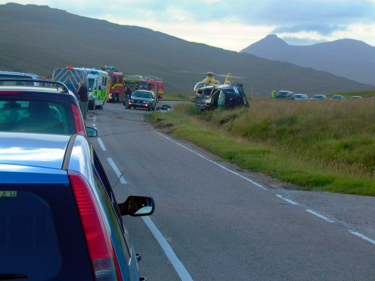 It's possible that your driving instructor didn't teach you how to overtake. This information will raise awareness of overtaking risks and how to minimise them.
It's possible that your driving instructor didn't teach you how to overtake. This information will raise awareness of overtaking risks and how to minimise them.
Well-planned and well-executed overtaking manoeuvres are no more dangerous than any other aspect of driving. The critical thing to remember is that you should avoid impulsively, opportunist overtakes.
The time to decide whether or not you want to overtake is when you first come up behind a vehicle, not when you see a gap. You might follow another vehicle for miles before a safe overtaking opportunity arises. The opportunity might not arise. Don't force it!
If you are a driving instructor, you might find the ideas form a helpful starting point for your overtaking lessons (lots more instruction advice/tips at John Farlam's ADI MasterClass).
Researchers at Nottingham University determined the following statistics when studying police records of overtaking accidents:
35% hit a vehicle turning right as the overtaking vehicle was attempting to pass
16% hit a vehicle travelling in the opposite direction
10% side-swiped the vehicle they were overtaking
8% lost control when overtaking or returning to the nearside lane
6% hit a vehicle that was turning or crossing at a junction
14% involved 'undertaking' (passing on the left)
5% resulted from evasive action taken by a driver when attempting to avoid someone else's risky overtaking
The statistics show that there's a lot of room for improvement. But what improvements can we make, and how?
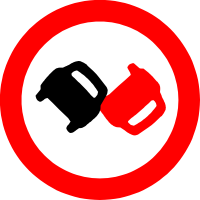 In an ideal world, overtaking accidents would be prevented by better road design; however, one of the problems is that many of our roads were first built sixty or more years ago.
In an ideal world, overtaking accidents would be prevented by better road design; however, one of the problems is that many of our roads were first built sixty or more years ago.
Safety on these roads can and has been improved by road markings designed to deter overtaking.
Markings include solid white lines along the edge of the carriageway, encouraging drivers to keep to the centre of their lane rather than positioning to the left, hatching along the centre of two-way roads, solid centre lines, etc. But the authorities are limited in what they can do to change existing roads.
Ultimately, a change in driver behaviour is essential for continuing improvements in overtaking safety. No amount of paint will stop drivers like the one in the photo.
A good starting point for overtaking safety might always be to make your decisions based on the following two questions:
"Do I need to overtake?"
"Do I need to overtake now?
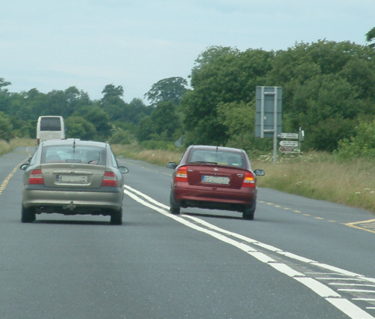 A lot of the frustration drivers experience is caused by their seeming inability to consider their journey as a whole instead of simply concentrating on the next 100 metres of road space.
A lot of the frustration drivers experience is caused by their seeming inability to consider their journey as a whole instead of simply concentrating on the next 100 metres of road space.
To answer the question "Do I need to overtake?" you must consider your complete journey and expected arrival time.
Overtaking a few cars is unlikely to get you there any quicker! Unless the journey is part of a life and death emergency, there is probably no real 'need' to overtake at all.
The driver in the picture is taking a significant risk by crossing solid lines. Not only is this illegal, but it's also dangerous. If you look deeper into the picture, you can see a bus ahead, and likely more traffic - so the overtake is unlikely to gain this driver any time.
If you look at the estimated arrival time on your sat-nav, you will probably realise that regardless of how you drive, your arrival time will vary very little.
Overtaking several vehicles might buy you a few minutes, but more often than not, overtaking won't make any difference. So when answering the question "Do I need to overtake?" ask yourself how much time you will gain and what you will do with that time.
Overtaking can be helpful if you're stuck behind a slow-moving vehicle on an open road, say, a tractor. Overtaking also helps you to maintain a good cruising speed on motorways. But in most other situations, it will be a waste of time, fuel and effort - and will often be stressful.
I have occasionally been known go out for a drive just for the sake of driving - on these occasions, I'll overtake just for 'fun'. BUT. I take the utmost care to plan each overtake. Also, I'm not in a hurry; the cars I overtake often catch me at the next traffic lights!
 When following a long traffic queue or approaching a built-up area, overtaking one or two vehicles is unlikely to affect your overall journey time but will increase your risk of an accident. But if you feel that overtaking is worthwhile, consider waiting for the right opportunity.
When following a long traffic queue or approaching a built-up area, overtaking one or two vehicles is unlikely to affect your overall journey time but will increase your risk of an accident. But if you feel that overtaking is worthwhile, consider waiting for the right opportunity.
There is a simple rule which says, 'Good driving starts in bed'.
This rule makes sense when reducing the need to overtake – get up ten minutes earlier and allow more time for your journey. This fits neatly with my own general 'Ten-minute rule' – allow an extra ten minutes of journey time for every hour you expect to travel.
However, even if you leave plenty of time, there may still be occasions when you want to overtake; when these situations arise, you must be well-equipped with an overtaking plan.
 Before starting any overtaking manoeuvre, consider the safety and whether your overtake will be legal.
Before starting any overtaking manoeuvre, consider the safety and whether your overtake will be legal.
Are there any junctions to the left or right from which vehicles may emerge?
Are there any gateways?
How wide are the footpaths?
Is my view ahead limited by the brow of a hill, overhanging branches, walls or other obstructions?
Can you see well ahead for vehicles that might be approaching fast?
You are looking for anything that might make your manoeuvre unsafe.
The obvious things are road features, markings and signs; these warn you of bends, hill crests, pedestrian crossings, etc.
Defensive drivers will also be considering other information. For example, a 'cattle' warning sign might draw your attention to a greasy road surface that could cause danger when overtaking; skid marks might indicate a concealed entrance.
When you overtake on a two-way road the location is critical.
Find a place that will minimise time spent on the wrong side of the road (time exposed to danger). With this in mind, you could consider overtaking immediately after a junction or bend where the target vehicle's speed is slowest, and you have a long stretch of clear road ahead. If you do this, take care not to surprise or upset the driver you are overtaking (see 'the two P's below).
To reduce the risk of giving approaching drivers a heart attack (fear!), you must be able to accurately judge the speed of the 'closing gap'.
If two vehicles are approaching each other at 45mph and 55mph, the gap between them will close at approximately 48 metres per second. (Pace out 48 metres to see how long it is. Then try it with your eyes closed to get a sense of the danger!)

In addition to approaching vehicles, you must also consider the vehicle you intend to pass.

Is it being driven erratically?
Will it start to speed up?
Who's driving?
Beware of cars with 'lucky dice' dangling from the mirror – they are often driven by gamblers!
I remember an invaluable driving rule that I picked up from a police instructor many years ago – it's ideal when deciding to overtake and simply states that you must never forget the two Ps.
First P: Is your manoeuvre Practical?
Consider whether your manoeuvre is practical (bearing in mind the points outlined in this article).
Second P: Is your manoeuvre Political?
What will other road users think? Even though your expert knowledge tells you that it's perfectly safe to overtake, that safety can soon be jeopardised by another road user who takes exception to your actions.
Another important consideration is ensuring that you leave enough space for the vehicle you pass. too close is impractical and will upset or distract other drivers. Cutting in after overtaking can cause people to panic, brake or swerve.
Also, give plenty of clearance when passing vulnerable road users such as cyclists or horse riders - cyclists might wobble, hit uneven road surfaces or be blown off course by the wind. Because of this, you should leave at least as much space as you would when passing a car, preferably more.
The Highway Code says:
leave at least 1.5 metres when overtaking cyclists at speeds of up to 30mph, and give them more space when overtaking at higher speeds
pass horse riders and horse-drawn vehicles at speeds under 10 mph and allow at least 2 metres of space
allow at least 2 metres of space and keep to a low speed when passing a pedestrian who is walking in the road (for example, where there is no pavement)
take extra care and give more space when overtaking motorcyclists, cyclists, horse riders, horse drawn vehicles and pedestrians in bad weather (including high winds) and at night
you should wait behind the motorcyclist, cyclist, horse rider, horse drawn vehicle or pedestrian and not overtake if it is unsafe or not possible to meet these clearances.
To overtake safely, you need to be quick and stable.
Quick to minimise your 'time exposed to danger' on the wrong side of the road. Stable to maintain control, especially if things don't go to plan
Your ability to be quick will depend to a degree on the vehicle that you are driving. If your car is not powerful enough to overtake using the method shown in this information, it's unsafe. Avoid the temptation to 'wind up and swoop out'. While this method will work, you are depending others to maintain your safety margins. If something unforeseen happens, you will have no escape route.
Keep your vehicle stable by choosing the safe overtaking path shown in our diagram (see method).
 The numbers (in brackets) correspond to the numbers shown on the diagram.
The numbers (in brackets) correspond to the numbers shown on the diagram.
Mirrors
Early repeated mirror checks are required to ensure that the road behind is safe and that no one is overtaking you.
Hang-back
If the road appears clear ahead of the 'target' vehicle, close the gap to your 'launch point'. In a manual car, select the most appropriate gear for brisk acceleration. Ensure that you position to maintain maximum forward vision. Never hold a position closer than a one-second gap on a good, dry road.
Mirrors/Signals
Make a final check of all mirrors and consider a direction signal to show that you are moving out or a flashing headlamp signal to alert the driver ahead to your presence. Also, check that the target vehicle, or other vehicles ahead, are not signalling to turn.
Position
Position: Move out with moderate acceleration (1). If the road is still clear, increase the power to drive through (2). In an automatic or hybrid you might need 'kick down' (depending on the type of automatic) for acceleration. In an EV or auto with CVT simply increase the power. Note that you MUST NEVER commit to the manoeuvre until you have reached this point (1) and seen that the road ahead is clear. Always be prepared to drop back.
Mirrors/Position
(2) Ensuring that the 'target' car is visible in the nearside mirror, start your gradual straight-line return to the left.
Mirrors
At (3), the overtaken vehicle should be visible in your centre mirror, and you should be pulling away to (4) open the gap.
The red line shows how not to overtake! (The unstable path taken by 'swoop out' drivers).
Hang-back is the name given to the road position you should adopt before making your final commitment to overtake. This position will provide a good 'zone of vision', which will assist your planning for the overtake.
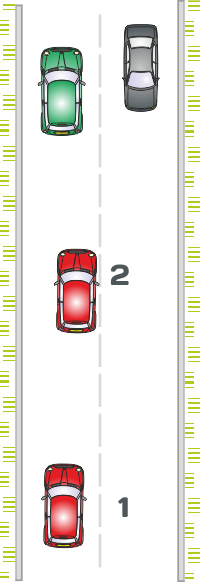 We recommend that the hang-back position should only be used by experienced drivers who have had specific training in overtaking, for example, on an advanced driving course.
We recommend that the hang-back position should only be used by experienced drivers who have had specific training in overtaking, for example, on an advanced driving course.
The hang-back position (2) is substantially closer to the vehicle in front than what is considered a normal safe following position (1) - it will generally approximate your 'thinking distance'.
This position eliminates the need to close up a lot of space immediately before overtaking and enables the manoeuvre to be completed quicker and over a shorter distance. You must compensate for the lack of separation distance by being 'hyper aware' of risks/dangers ahead.
While hanging back, you might need to adjust your road position to the right or left to maximise forward vision. For example, if the road curves to the left ahead, you may get a better view by moving to the left and looking beyond the 'target' to the nearside. If there are junctions or other openings ahead, drop back until or unless you are 100% sure that vehicles will not emerge. (The best policy is never to overtake when approaching a junction – especially a junction to the right.)
Hang-back is a temporary position that can be adopted when a likely overtake is imminent. Driving in this position can place increased stress levels on the drivers of both the overtaking vehicle and the target vehicle.
If an expected overtaking opportunity does not materialise or seems unlikely in the short term, a two-second following distance must be re-established for safety.
OK, only the first sign is a legal requirement. If you overtake where you see this sign, you can be prosecuted for not complying with the sign.
However, all the other signs suggest that overtaking might be dangerous. In a court case following an accident, the prosecution would likely claim that the driver ignored the signs.
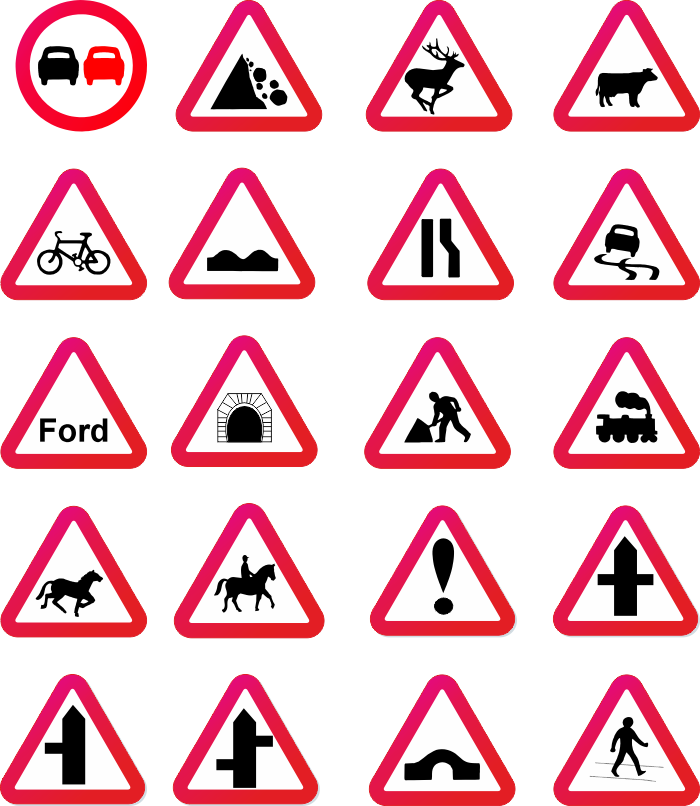
Do you know all the signs? If not, download a free book from the Government website by clicking here.
We don't live in an ideal world, but effective journey planning will help to ease frustration and reduce your need to overtake, choose a safe overtaking location, remember the two P's, and make sure that you are 'quick and stable'.